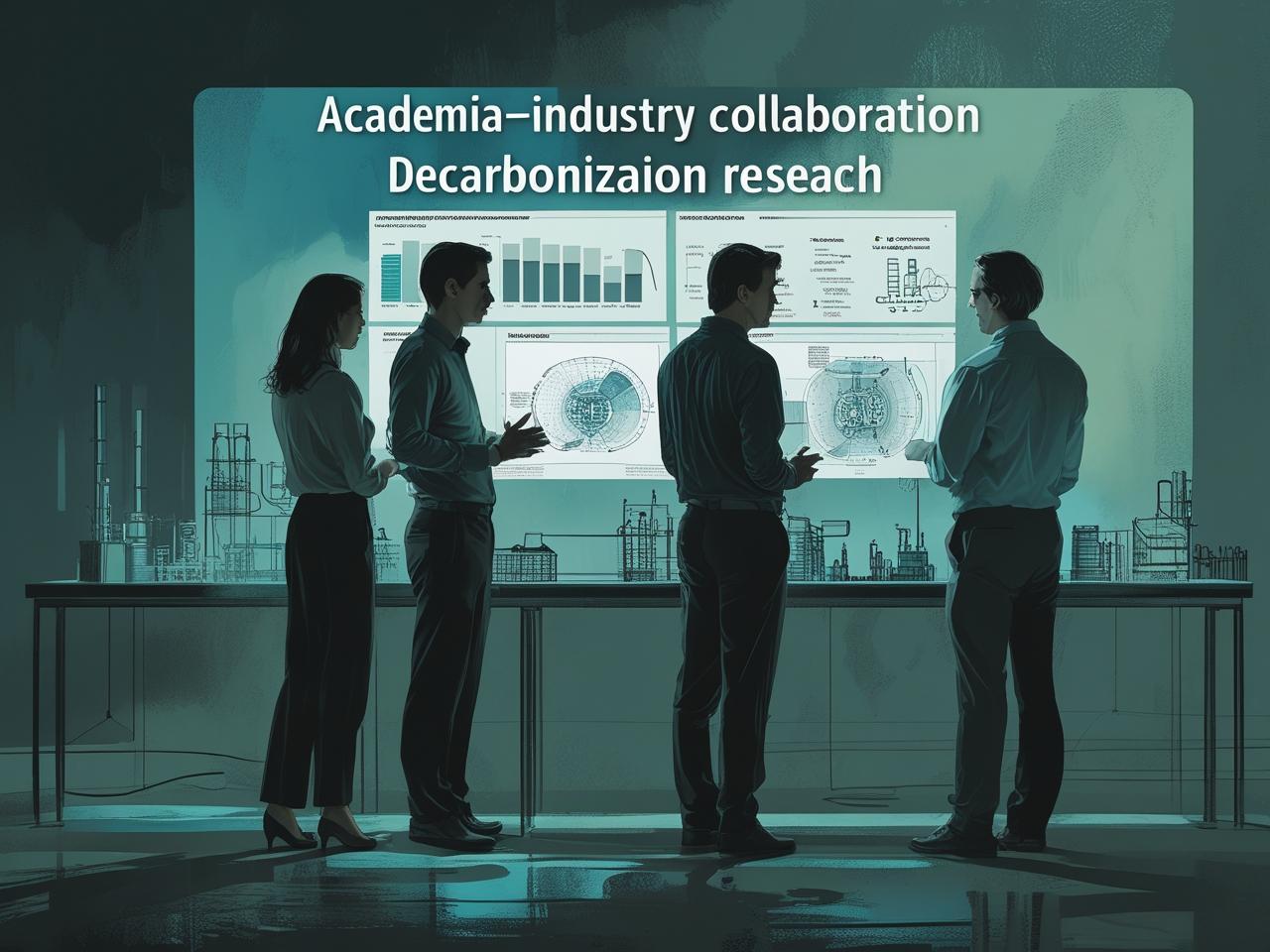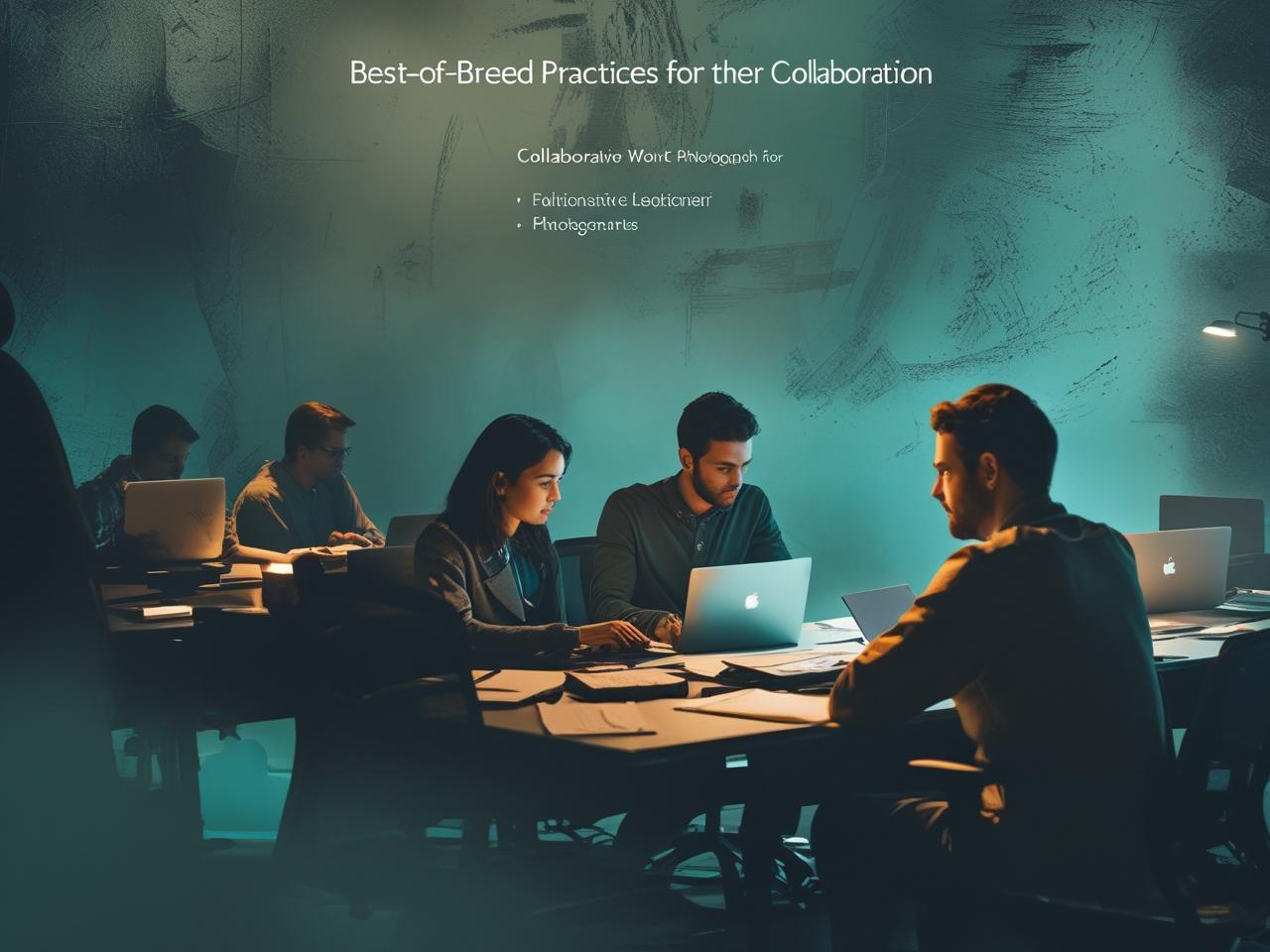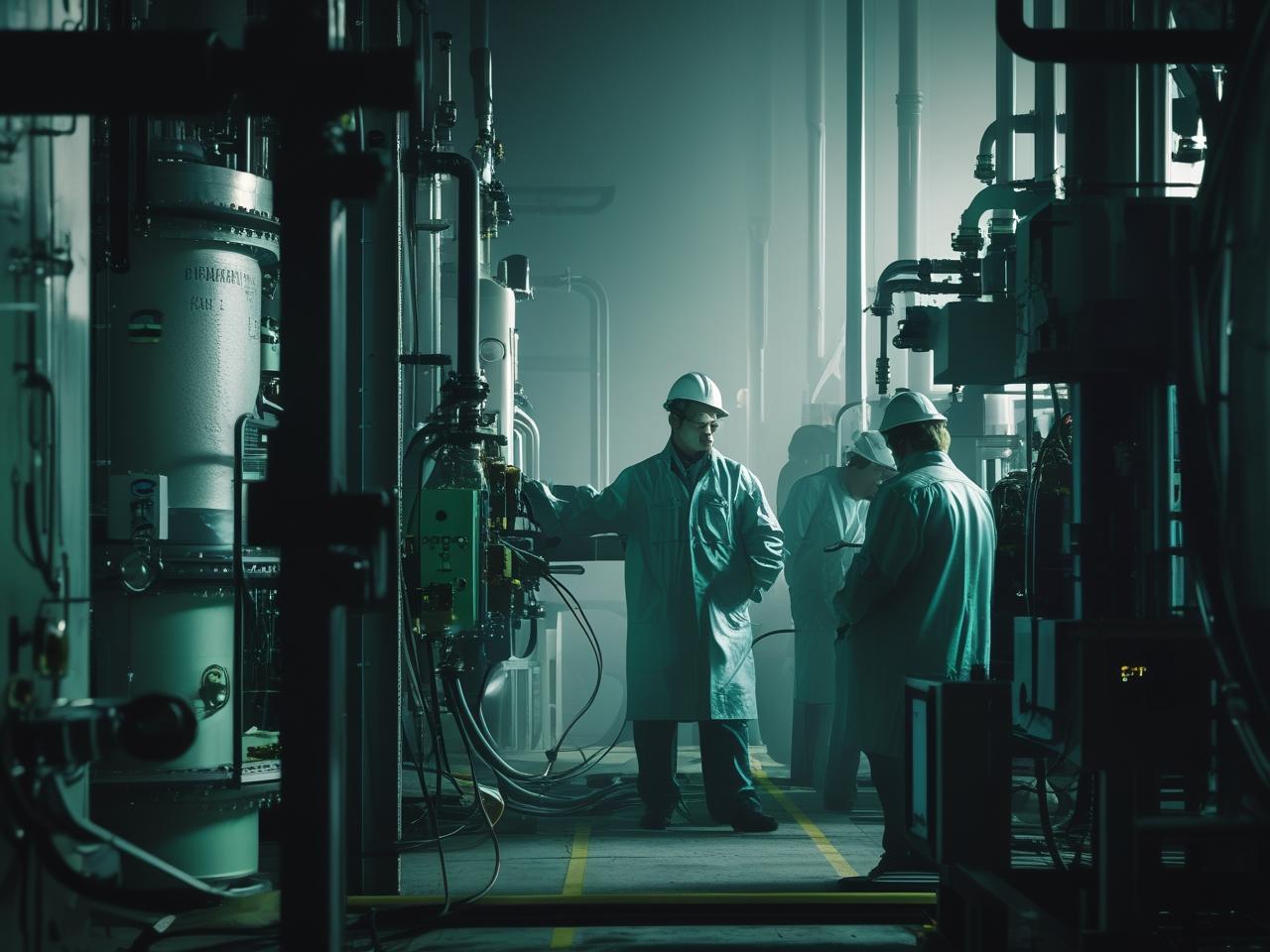Translational Research-Academia-Industry Collaboration For Decarbonization @ Climafix 2025
Join us on 12th September at IIT Madras Research Park, from 02.30 PM to 05.00 PM, for an engaging session on Academia Industry Collaboration for Decarbonization.

This session will explore how academia and industry can co-create scalable solutions for decarbonization by aligning research innovation with industrial needs, leveraging collaborative frameworks, and accelerating the translation of climate research into real-world impact.
Discussions will center around effective translational research practices, proven collaboration models, actionable toolkits, and the role of ecosystems like IITM in enabling industry-wide low-carbon transitions.
Why is “Academia-Industry Collaboration for Decarbonization” impactful in today’s world?
It is the bridge that transforms innovation into implementation — turning lab-scale climate solutions into scalable, real-world industrial applications.
In India, where over 70% of emissions stem from hard-to-abate sectors like steel, cement, and transport, collaboration between academia and industry is essential for decarbonization. Globally, corporate investments in university-led climate research have doubled in the past five years, signaling a shift from isolated innovation to collaborative problem-solving.
Despite producing world-class research, less than 10% of academic climate innovations in India reach commercialization. Effective academia-industry partnerships can flip this number — enabling IP generation, co-development, and adoption of low-carbon technologies at scale. Moreover, ecosystems like IITM Research Park have demonstrated the power of such partnerships, enabling over 100 industrial pilots and decarbonization projects in the past decade. As industries face growing pressure to decarbonize and academia seeks real-world impact, this collaboration is not optional — it’s a strategic imperative.
With these in mind, CLIMAFIX 25 has a dedicated half day session focussed on academia-industry collaboration for translational research for decarbonization.
| Translational Research Experts from IIT Madras, IIT Bombay, IISC Bangalore, CSIR Labs |
|---|
Sub Topics & Sub Elements For Sessions
| Subtopics | Description |
|---|---|
| Making Translational Research Effective | 1. Understanding the industry’s technology readiness level (TRL) expectations 2. Designing research with end-use applications in mind 3. Aligning academic KPIs with industry outcomes (IP, impact, and timelines) 4. Case studies: successful translational decarbonization research (e.g., carbon capture, process electrification) 5. Common pitfalls in translational climate-tech research and how to avoid them 6. Role of incubators and research parks (e.g., IITM’s ecosystem) |
| Best-of-Breed Practices for Collaboration | 1. Frameworks for long-term collaboration (MoUs, joint labs, industry fellowships) 2. Governance structures for co-owned research projects 3. IP sharing and licensing models that balance incentives 4. Industry-sponsored PhDs and project chairs: structuring them for success 5. Academic entrepreneurship and spinouts: enabling dual roles for faculty 6. Examples from IITM, IISc, and global models (MIT-Industry consortia, Stanford Energy 3.0) |
| Tools & Actionables for Collaboration | 1. Co-development platforms and digital twins for decarbonization 2. Funding tools: joint grant applications (e.g., DST-Industry calls, CSR-backed programs) 3. Technology transfer offices: how they can enable smoother engagements 4. Templates for NDAs, IP agreements, and translational contracts 5. Engagement tools: workshops, reverse pitches, industry problem statements 6. Research matchmaking platforms and AI-based collaboration finders |
| Industry Decarbonization Assistance by IITM Ecosystem | 1. Role of Research Park, Carbon Zero Challenge, and Industrial Consultancy at IITM 2. Case studies of industry-engaged decarbonization efforts (e.g., cement, steel, renewables) 3. Startup incubations supported by IITM (carbon capture, hydrogen, waste-to-energy) 4. Facilities and labs available for industrial decarbonization R&D 5. How companies can plug into the IITM ecosystem — as sponsors, collaborators, or customers 6. Structured programs for capacity-building and skilling in low-carbon technologies |
Making Translational Research Effective
| Subtopics | Description |
|---|---|
| Understanding the industry’s technology readiness level (TRL) expectations | A framework that helps align academic research stages with industry expectations for deployable technologies. Industries typically invest in technologies at TRL 6–9, where systems are validated in real-world settings. Bridging early-stage innovations (TRL 1–4) to this level is critical for commercialization. Examples: Carbon capture systems scaled from lab to pilot at Dalmia Cement; hydrogen electrolyzers from lab prototypes to 1 MW plants. |
| Application-Oriented Research Design | Research efforts focused on solving practical industry challenges with real-world constraints in mind, such as cost, integration, regulatory fit, and process compatibility. Examples: Electrified kilns designed to meet SME heat loads in textile units; bio-based solvents tailored for use in existing coating systems. |
| KPI Alignment Between Academia & Industry | The process of aligning key performance indicators (KPIs) such as timelines, patents, TRL milestones, and field pilots to create mutual value in research collaborations. Examples: Tata Power–IIT Bombay energy efficiency tool met joint KPIs of impact and field validation; Reliance–IISc plastic recycling project led to commercial IP and a demo plant. |
| Translational Research Case Studies | Successful projects where academic research evolved into scalable, industry-ready decarbonization solutions, often through startups or direct industry adoption. Examples: Carbon Clean (IIT KGP) now powers industrial CO₂ capture worldwide; Chakr Innovation (IIT Delhi) scaled diesel emission retrofits through telecom clients. |
| Common Translational Research Pitfalls | Barriers that limit the scalability of academic innovations, including high costs, lack of market fit, slow IP processes, and missing certifications. Examples: Lab-scale hydrogen membranes stalled due to IP conflict; eco-brick innovations failed without regulatory approvals or durability data. |
| Role of Incubators and Research Parks | Specialized ecosystems that support translational R&D by offering infrastructure, funding, industry access, and mentorship to accelerate commercialization. Examples: IITM Research Park hosted 100+ climate-tech pilots; Carbon Zero Challenge enabled startups like Tan90 and Sea6 Energy to move from idea to industry. |
Best-of-Breed Practices for Collaboration
| Subtopics | Description |
|---|---|
| Frameworks for Long-Term Collaboration | Formal agreements such as MoUs, joint labs, and long-term fellowships that establish stable, multi-year academia-industry partnerships. These frameworks enable continuity, shared infrastructure, and smoother IP governance. Examples: Tata Steel–IIT Madras joint advanced materials lab; Dow Chemicals’ ongoing fellowship program with IISc. |
| Governance Structures for Co-Owned Research Projects | Structured oversight models (committees, joint review boards, technical advisory groups) that guide shared projects with clear roles, decision-making processes, and progress evaluation. Examples: IITM’s Industry Affiliate Program with rotating governance; NTPC–IIT Delhi’s joint energy lab with shared steering committee. |
| IP Sharing and Licensing Models | Collaborative IP frameworks that define ownership, licensing, and revenue-sharing in a balanced way to incentivize both academic creators and industrial partners. Examples: IITM’s tiered licensing model for startups and corporates; MIT’s “non-exclusive royalty-free” (NERF) licensing approach for sponsor-funded research. |
| Industry-Sponsored PhDs and Project Chairs | Doctoral and faculty positions funded by industry to work on long-horizon R&D, allowing deeper engagement, continuity, and alignment with industrial innovation pipelines. Examples: Ashok Leyland’s sponsored PhDs at IIT Madras on EV drivetrain tech; Infosys Chair Professorship in AI and Sustainability at IISc. |
| Academic Entrepreneurship and Spinouts | Mechanisms that support faculty and researchers in launching startups or engaging commercially, including leave policies, equity sharing models, and tech transfer offices. Examples: IITM’s “faculty startup” policy enabling dual roles; Stanford’s Office of Technology Licensing supporting hundreds of faculty-founded ventures. |
| Global Models of Collaborative Research | International benchmarks in academia-industry ecosystems that have scaled deep collaboration, joint R&D, and commercial impact. Examples: MIT’s Industrial Liaison Program with 200+ global corporate members; Stanford Energy 3.0, a platform for joint innovation in clean energy technologies. |
Tools & Actionables for Collaboration
| Subtopics | Description |
|---|---|
| Co-Development Platforms & Digital Twins | Simulate and test low-carbon technologies using real-time data and virtual environments to accelerate development. Examples: IITM–Tata Realty energy twins; Siemens–IISc collaboration for industrial decarbonization. |
| Funding Tools: Joint Grants & CSR Programs | Co-funded R&D programs that leverage government grants or corporate social responsibility funds to support collaborative innovation. Examples: DST–Industry IMPRINT initiative; Saint-Gobain CSR partnership with IITM. |
| Technology Transfer Offices (TTOs) | Dedicated units that manage IP protection, licensing, and seamless transition of research outputs to industry. Examples: IITM’s Centre for Technology Transfer (CTT) with 200+ licenses; UC Berkeley’s IPIRA. |
| Templates: NDAs, IP, Contracts | Standardized legal templates that reduce delays and streamline collaboration processes. Examples: IIT Bombay IRCC’s MoU formats; Stanford University’s research agreement toolkit. |
| Engagement Tools: Workshops & Reverse Pitches | Facilitated events and platforms that connect academia with industry priorities through two-way communication. Examples: IITM Industry Day; Confederation of Indian Industry (CII) Clean Energy Challenge. |
| Matchmaking Platforms & AI Tools | Platforms that use expertise mapping, intellectual property databases, and AI to recommend academic-industry collaborations. Examples: I-STEM research infrastructure portal; Elsevier’s Pure database. |
Industry Decarbonization Assistance by IITM Ecosystem
| Subtopics | Description |
|---|---|
| Role of Research Park, Carbon Zero Challenge, and Industrial Consultancy at IITM | IITM offers a robust innovation ecosystem where academia, startups, and industry collaborate on low-carbon technologies. Examples: Research Park hosts 100+ climate-focused firms; Carbon Zero Challenge (CZC) supports cleantech pilots; IC&SR facilitates 600+ industry-funded projects yearly. |
| Case Studies of Industry-Engaged Decarbonization Efforts | Real-world industry collaborations addressing emissions-intensive sectors. Examples: Low-carbon cement with Ramco; energy analytics tools with Tata Power; advanced solar technologies with ReNew Power. |
| Startup Incubations Supported by IITM | Climate-tech startups are nurtured by IITM Incubation Cell in areas like carbon capture, green hydrogen, waste valorization, and mobility. Examples: Carbon Loops (bio-CCUS); ePlane (electric aerial mobility); Tan90 (cold-chain energy efficiency). |
| Facilities and Labs for Industrial Decarbonization R&D | Access to advanced labs for decarbonization-focused research in combustion, materials, biofuels, and carbon capture. Examples: National Centre for Combustion R&D; Sustainable Energy Lab; Carbon Capture Pilot Facility. |
| How Companies Can Plug into the IITM Ecosystem | Companies can collaborate as R&D sponsors, co-locate at the Research Park, or join programs and challenge calls. Examples: L&T and Saint-Gobain’s presence at IITM Research Park; industry-led innovation calls via IC&SR. |
| Capacity-Building and Skilling Programs | Training programs and certifications in low-carbon tech including green hydrogen, energy systems, and net-zero strategies. Examples: GIAN short-term courses; NPTEL MOOCs; executive programs with industry bodies. |
What you can get from CLIMAFIX ‘25:
“Innovation that solves real-industry challenges with a structure designed to fast-track pilots,
partnerships, and investments.”
Climafix ‘25, through 3 years of successful events, plans to focus on Industrial Innovations this time. With exclusive expert sessions, deep-dive panel discussions and startup pitches all discuss the current landscape and trends- this is the place you want to be if you want to learn about BIOECONOMY FOR DECARBONIZATION.
Join the Movement!
- 700+ Delegates
- 100+ Speakers
- 100+ Investors


Making translational research effective

Best-of-breed practices for collaboration

Tools & actionables for collaboration

Industry decarbonization

